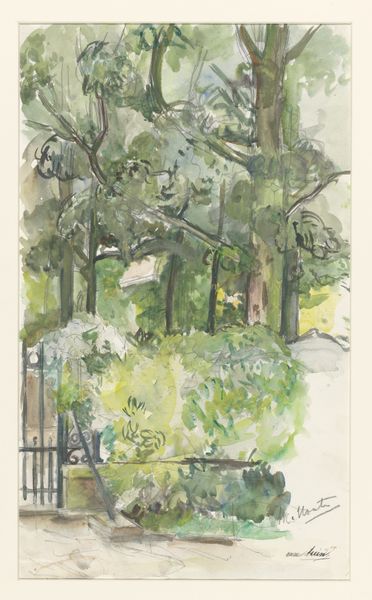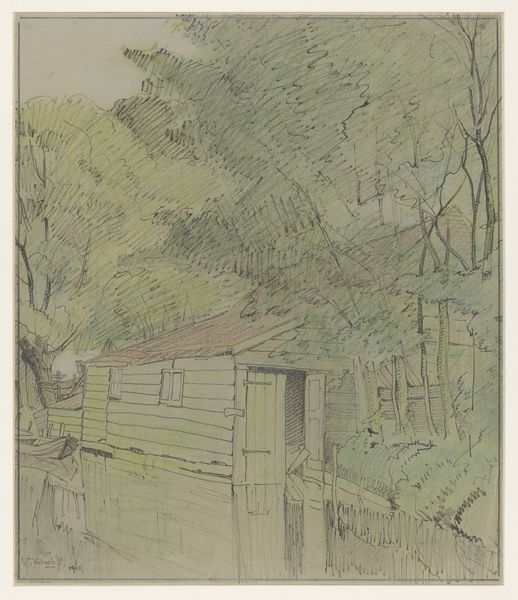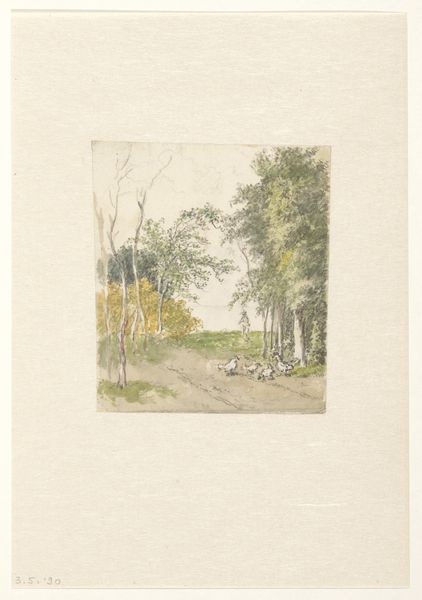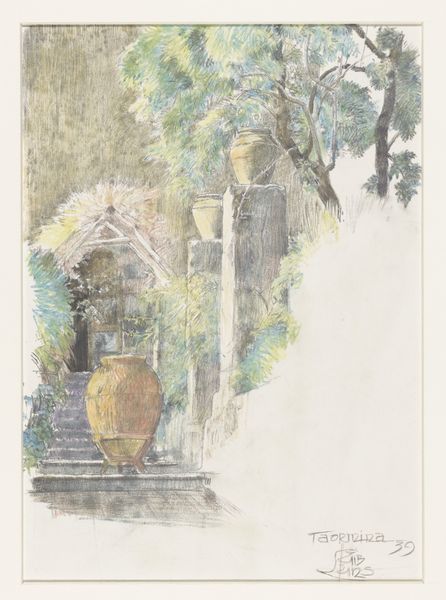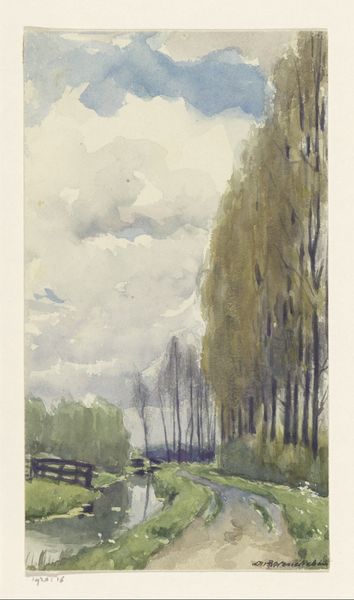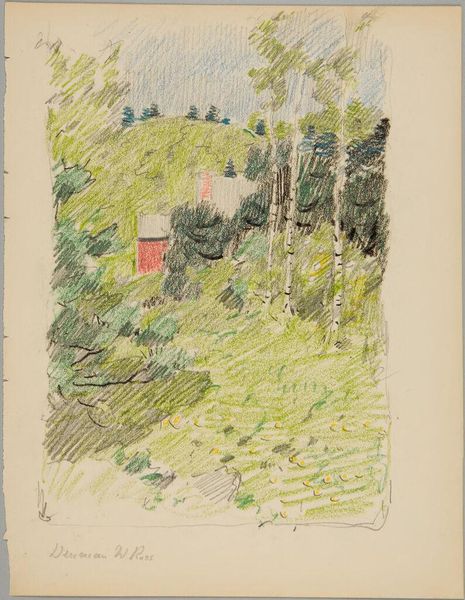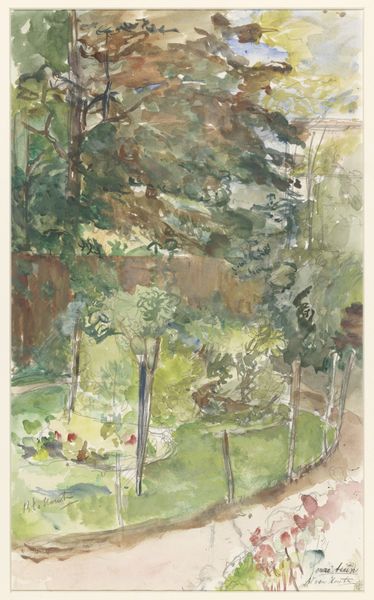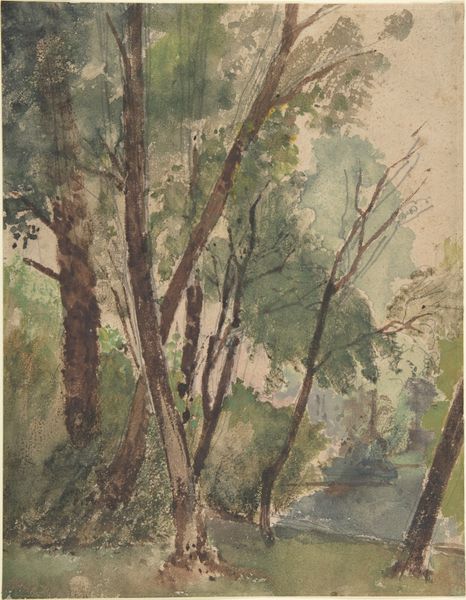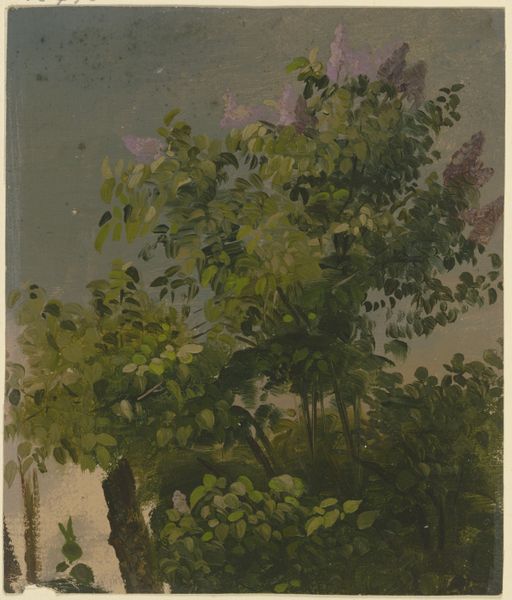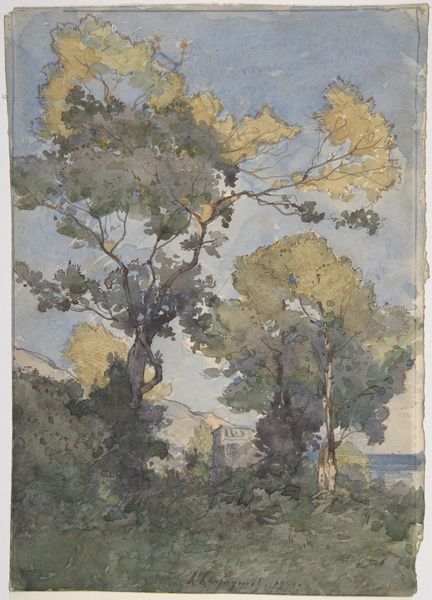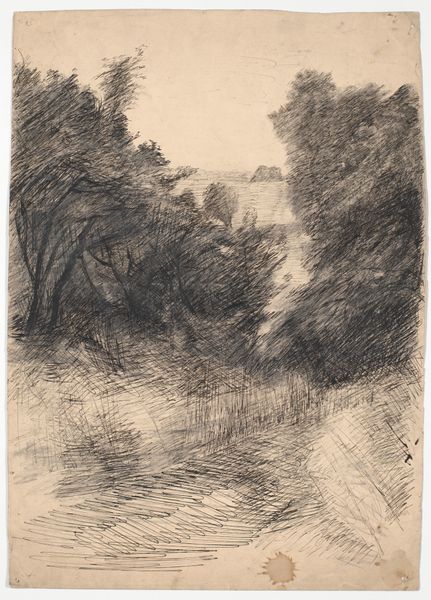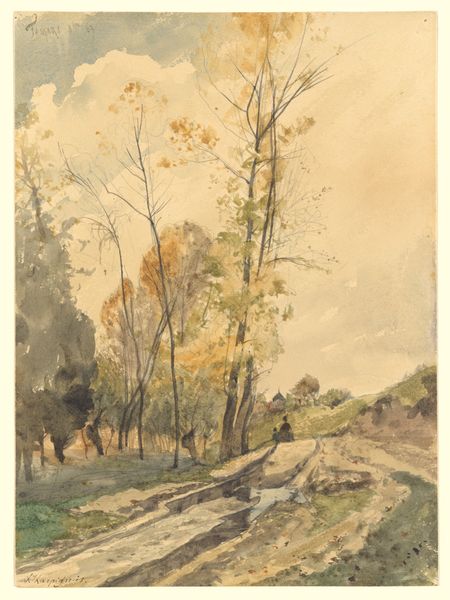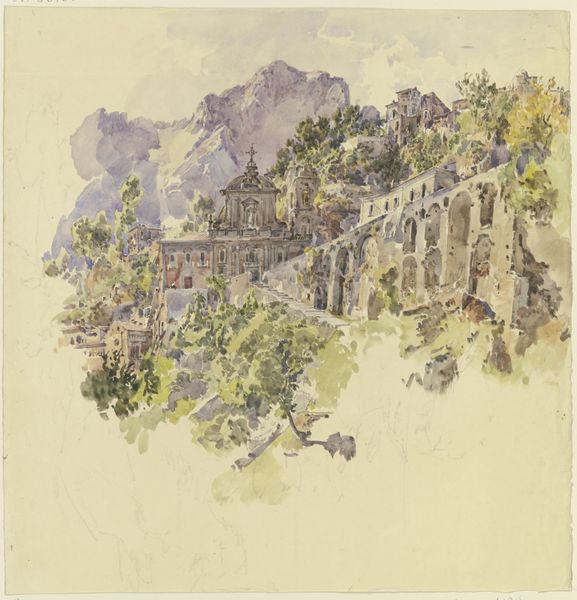
Dimensions: height 440 mm, width 270 mm
Copyright: Rijks Museum: Open Domain
Curator: Looking at Joan Berg's watercolor titled "Uitzicht op bomen en gebouwen", or "View of Trees and Buildings," made in 1919, I'm struck by the hazy tranquility. What catches your eye first? Editor: That misty, almost melancholic light. It softens the buildings in the background, making the trees in the foreground feel closer, more present. It gives off a feeling of introspection, wouldn’t you agree? It makes me ponder the space of quiet contemplation, of inner life as much as outer view. Curator: That's a wonderful interpretation. Considering Berg's artistic circle and the historical context – the aftermath of World War I, a period of intense social upheaval – this watercolor may reflect a broader sentiment of seeking refuge in nature, a turning away from the industrial and political landscapes. How might that context affect our reading of its imagery, beyond the personal? Editor: Well, viewing it as a response to social change helps situate the work within the broader artistic currents of the time, such as an expressionist rendering of interiority, and post-impressionist sensibilities. The simplification of form—the slightly blurred effect, combined with her loose brushwork in watercolor—allows her to give focus on her psychological space. Berg was exploring an alternative form to navigate this fractured and fast developing period. It’s also striking to see the work within the broader frame of women Impressionists at the time, too often omitted. Curator: Absolutely. Understanding the institutional frameworks—exhibitions, art societies, and networks available to women artists like Berg—is key to appreciating their contributions. It sheds light on how women artists navigated a male-dominated art world and carved out spaces for their work to be seen and appreciated. What do you make of its current home here in the Rijksmuseum? Editor: A painting like this in a grand institution allows us to reconsider notions of “major” and “minor” art. How do institutions choose which narratives get highlighted? Why has Berg been largely overlooked until now? These are crucial questions for us to grapple with today. Curator: Precisely. By examining Berg’s work through multiple lenses—biographical, art historical, and socio-political—we can gain a richer understanding of its complexities and its relevance for contemporary audiences. It is a constant engagement, isn't it? Editor: Indeed, seeing this artwork in relation to larger forces allows us to explore both personal experience and social dynamics through the intimate medium of watercolour. It's a potent combination.
Comments
No comments
Be the first to comment and join the conversation on the ultimate creative platform.
